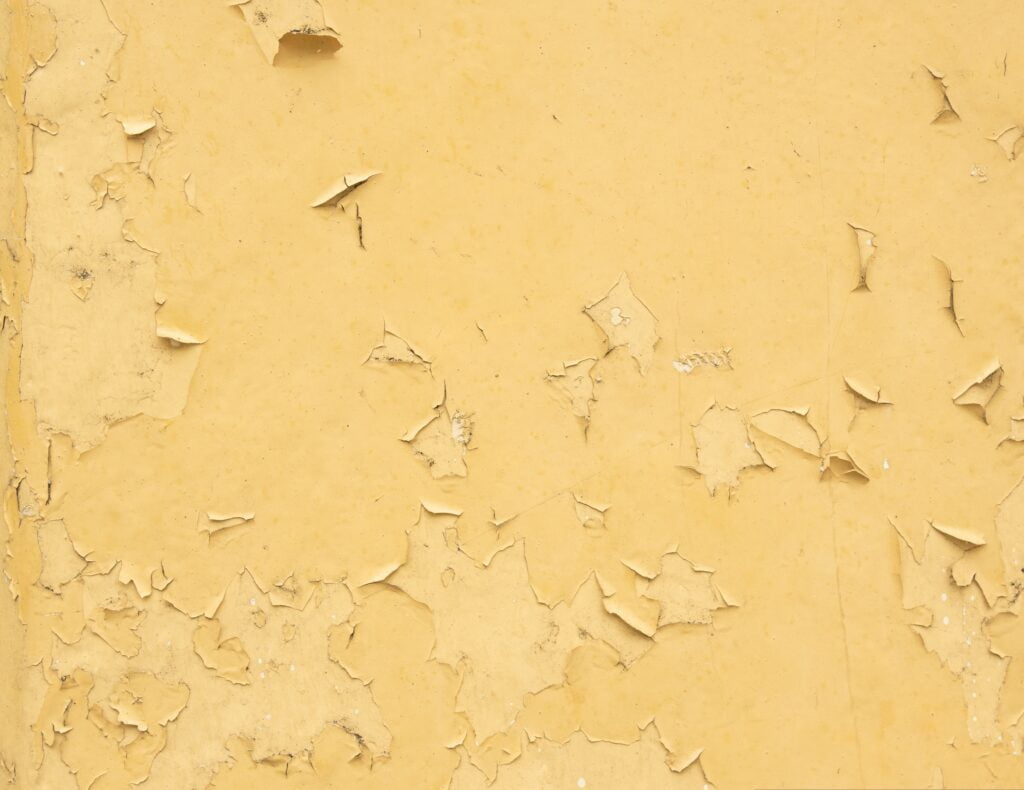In the world of gardening, the sight of vibrant green leaves on a cherry tomatoes plant is a delight for any enthusiast. However, what if those leaves suddenly turn a peculiar shade of yellow? This perplexing phenomenon has been the subject of much speculation and confusion amongst gardeners. In this article, we will explore the potential causes behind the yellowing of leaves in cherry tomatoes plants, unraveling the intricate relationship between plant health and environmental factors. By understanding these underlying causes, gardeners can equip themselves with the knowledge needed to nurture thriving tomato plants and ensure a bountiful harvest.

Possible Causes of Yellow Leaves on Cherry Tomato Plants
Cherry tomato plants are prized for their delicious fruits and vibrant green foliage. However, it can be disheartening to notice yellow leaves on these plants. Yellow leaves are often a sign of distress or imbalance within the plant’s internal systems. In order to rectify this issue, it is crucial to identify the possible causes of yellow leaves on cherry tomato plants. This article will explore various factors that can contribute to this problem, including nutritional deficiencies, pests and diseases, excessive moisture, temperature stress, overfeeding, overcrowding, root damage, inadequate sunlight, chemical exposure, and genetic factors.
Nutritional Deficiencies
One of the primary reasons for yellow leaves on cherry tomato plants is nutritional deficiencies. These deficiencies can result from a lack of essential nutrients required for the plant’s growth and development. Several key nutrients may be lacking, including nitrogen, phosphorus, potassium, iron, and magnesium. Each of these deficiencies can manifest in unique ways, leading to yellowing of the leaves.
Nitrogen Deficiency
Nitrogen is a vital nutrient for plant growth, as it plays a crucial role in the production of chlorophyll, which is responsible for the green coloration in leaves. When a cherry tomato plant lacks sufficient nitrogen, its leaves may turn yellow. Additionally, the plant may exhibit stunted growth and reduced overall vigor. Nitrogen deficiencies can arise from poor soil quality or inadequate fertilization.
Phosphorus Deficiency
Phosphorus is another essential nutrient required by cherry tomato plants for healthy growth. It aids in the development of strong root systems, promotes flower and fruit formation, and enhances overall plant vigor. A phosphorus deficiency can result in pale yellow leaves with a slight bluish tint. The plant may also display slow growth and produce fewer flowers or fruits. Soil with poor phosphorus content or pH imbalances can lead to this deficiency.
Potassium Deficiency
Potassium is vital for various plant processes, including water absorption, transportation of nutrients, and regulation of overall plant functions. Deficiencies in potassium can lead to yellowing of the leaves, starting at the edges and progressing towards the center. The leaves may also appear scorched or have brown spots. Plants grown in potassium-deficient soil or subjected to excessive watering are prone to this deficiency.
Iron Deficiency
Iron is necessary for the synthesis of chlorophyll, making it crucial for maintaining the green color of cherry tomato leaves. When a plant lacks iron, the leaves may exhibit interveinal chlorosis, where the leaf veins remain green while the interveinal areas turn yellow. Iron deficiencies often occur in alkaline soils, where the availability of iron to the plant is limited.
Magnesium Deficiency
Magnesium is an essential component of chlorophyll and is responsible for photosynthesis, energy production, and nutrient uptake. A deficiency in magnesium can cause yellowing of older leaves, while the veins remain green. This condition, known as interveinal chlorosis, affects the lower leaves first. Magnesium deficiencies usually occur in acidic soils or result from excessive potassium or calcium levels, which can impede magnesium absorption.
Pests and Diseases
Yellow leaves on cherry tomato plants can also be attributed to the presence of pests and diseases. These nuisances can weaken the plant’s defenses, disrupt its nutrient uptake, and cause various symptoms, including yellowing leaves.
Aphids
Aphids are tiny, soft-bodied insects that feed on plant sap. These pests pierce the leaves with their mouthparts and suck out the plant’s juices, leading to reduced vigor and yellowing of the leaves. Additionally, aphids can transmit viruses to the plant, exacerbating the issue. Inspecting the undersides of leaves for the presence of aphids is crucial for early detection and control.
Whiteflies
Whiteflies are small, winged insects that primarily infest the undersides of leaves. Like aphids, they feed on plant sap, causing yellowing and reduced plant vigor. Whiteflies also secrete honeydew, a sticky substance that can attract mold growth and further harm the plant. Regular monitoring and the implementation of appropriate control measures are essential to manage whitefly infestations.
Spider Mites
Spider mites are minuscule pests that can cause significant damage to cherry tomato plants. These arachnids feed on plant sap, leading to yellowing leaves, webbing between leaves and branches, and overall plant decline. Hot and dry conditions often contribute to the proliferation of spider mites. Consistent monitoring and the use of insecticidal soaps or oils can effectively manage spider mite infestations.
Tomato Yellow Leaf Curl Virus
Tomato Yellow Leaf Curl Virus (TYLCV) is a viral disease transmitted by the silverleaf whitefly. Infected plants typically exhibit symptoms such as leaf curling, yellowing, and stunted growth. Unfortunately, there are no cures for viral diseases like TYLCV. Implementing preventive measures, such as using insecticidal barriers, practicing crop rotation, and destroying infected plants, can help reduce the spread of the virus.
Early Blight
Early blight, caused by the fungus Alternaria solani, is a common disease in cherry tomato plants. Its symptoms include yellowing and browning of the lower leaves, which eventually wither and die. Early blight thrives in warm and wet conditions, presenting a challenge for cherry tomato growers. Proper sanitation, including removing infected plant debris, and the use of fungicides can help manage early blight.
Fusarium Wilt
Fusarium wilt is a soil-borne fungal disease caused by the pathogens Fusarium oxysporum f. sp. lycopersici and Fusarium oxysporum f. sp. radicis-lycopersici. Infected plants often exhibit yellowing and wilting of the lower leaves, progressing upwards. Fusarium wilt can persist in the soil for several years, making prevention through crop rotation and the use of disease-resistant tomato cultivars crucial.
Verticillium Wilt
Verticillium wilt is another soil-borne fungal disease that affects cherry tomato plants. It is caused by the pathogens Verticillium dahliae and Verticillium albo-atrum. Similar to fusarium wilt, infected plants display yellowing and wilting of leaves, starting from the lower parts of the plant. Verticillium wilt can persist in the soil for an extended period, so prevention and management efforts should focus on soil sterilization and the use of resistant cultivars.
Powdery Mildew
Powdery mildew is a fungal disease caused by various species of the genus Erysiphe and Podosphaera. Infected plants exhibit a powdery white or grayish growth on their leaves, accompanied by yellowing and curling. This disease thrives in warm, humid conditions and can spread rapidly. Proper spacing, good air circulation, and the use of fungicides can help prevent and control powdery mildew.
Septoria Leaf Spot
Septoria leaf spot, caused by the fungus Septoria lycopersici, is a common disease affecting cherry tomato plants. It is characterized by the appearance of small, dark spots with yellow halos on the leaves. As the spots increase in number, the leaves yellow and drop prematurely, leading to reduced plant vigor. Proper sanitation, including removal of infected leaves and appropriate fungicide application, can help manage septoria leaf spot.

Excessive Moisture
Excessive moisture can also contribute to the yellowing of cherry tomato leaves. Both overwatering and poor drainage can cause waterlogged conditions, leading to root suffocation and nutrient imbalances.
Overwatering
Overwatering is a common mistake made by many gardeners, and cherry tomato plants are no exception. When the soil is consistently saturated with water, the roots cannot access oxygen, leading to poor nutrient uptake and root suffocation. As a result, the leaves may turn yellow due to nutrient imbalances and reduced photosynthetic capacity.
Poor Drainage
Inadequate drainage is often linked to overwatering, as excess water cannot escape from the soil, leading to waterlogged conditions. When the soil lacks adequate drainage, it becomes compacted and deprives the roots of oxygen. This oxygen deprivation can cause stress to the plant, resulting in yellowing leaves. Ensuring proper soil structure and incorporating organic matter can improve drainage and prevent waterlogging.
Temperature Stress
Temperature stress can significantly impact the health of cherry tomato plants, leading to yellowing of the leaves and diminished overall growth. Cherry tomatoes thrive in specific temperature ranges, and exposure to extreme heat or cold can disrupt their metabolic processes.
Extreme Heat
Cherry tomato plants are susceptible to heat stress when exposed to prolonged periods of high temperatures. Under extreme heat, the plants may exhibit wilting, leaf curling, and yellowing of the leaves. Heat stress affects the overall plant physiology, impacting photosynthesis and nutrient uptake. Providing shade and sufficient irrigation during periods of intense heat can help mitigate temperature stress.
Extreme Cold
In regions with colder climates, cherry tomato plants are vulnerable to damage from freezing temperatures. When exposed to extreme cold, the plant’s cells can freeze, leading to tissue damage and eventual yellowing of the leaves. Protecting the plants with proper insulation, such as row covers or cold frames, can shield them from the harsh cold and minimize leaf yellowing.

Overfeeding
While nutrients are essential for plant growth, overfeeding cherry tomato plants can have adverse effects, including yellowing leaves. Excessive nitrogen or an imbalanced fertilizer ratio can disrupt the plant’s nutrient uptake and lead to nutrient deficiencies.
Excessive Nitrogen Fertilizer
Nitrogen is a vital nutrient for plant growth, but excessive nitrogen can cause imbalances in the plant’s internal systems. When cherry tomato plants are overfed with nitrogen, they may exhibit excessive vegetative growth at the expense of fruit production. This imbalance can result in yellowing leaves, as the plant struggles to allocate nutrients effectively.
Imbalanced Fertilizer
Using an imbalanced fertilizer, where the ratios of nitrogen, phosphorus, and potassium are not optimal, can also lead to yellow leaves in cherry tomato plants. Proper fertilization requires a balanced approach, considering the plant’s specific nutrient requirements and the composition of the soil. A soil test can provide valuable insights into the nutrient composition and guide the appropriate fertilizer application.
Overcrowding
Overcrowding can negatively impact cherry tomato plants and contribute to the development of yellow leaves. Lack of air circulation and competition for resources can lead to stress and imbalances within the plant.
Lack of Air Circulation
When cherry tomato plants are densely packed, there is limited air circulation, inhibiting the drying of leaves after rain or irrigation. This prolonged moisture on the leaves can create an environment conducive to fungal diseases and pests, resulting in yellowing and overall decline. Proper spacing between plants and pruning of excessive foliage can improve air circulation and reduce the risk of yellow leaves.
Competing for Resources
Overcrowded cherry tomato plants also compete for essential resources, such as water, nutrients, and sunlight. When resources are limited, the plants may struggle to meet their nutritional requirements, leading to yellowing of leaves due to nutrient deficiencies or imbalances. Providing adequate space between plants and ensuring proper nutrient availability can help alleviate resource competition.
Root Damage
Root damage is another factor that can lead to yellow leaves in cherry tomato plants. Damage to the roots can disrupt the plant’s ability to absorb water and nutrients, thereby impacting its overall health.
Invasive Roots
Invasive roots from nearby trees or shrubs can cause root damage to cherry tomato plants. These invasive roots can grow into the tomato plant’s root zone, competing for resources and causing damage. The damaged roots may struggle to absorb water and nutrients effectively, leading to yellowing leaves as a result of nutrient deficiencies. Planting cherry tomato plants away from potential invasive root systems can prevent root damage.
Waterlogged Soil
Waterlogged soil, as mentioned earlier, can suffocate the roots of cherry tomato plants and hinder nutrient uptake. When the soil remains saturated for prolonged periods, the lack of oxygen can lead to root damage and reduced plant vigor. The damaged roots cannot support the proper functioning of the plant, resulting in yellowing leaves. Ensuring proper drainage and avoiding overwatering can prevent waterlogged conditions and root damage.
Transplant Shock
During the transplanting process, cherry tomato plants may experience shock and stress, resulting in yellowing leaves. Transplant shock occurs when the roots are disturbed or damaged, impairing their ability to effectively absorb water and nutrients. This shock can manifest as yellowing leaves due to nutrient deficiencies or imbalances. Minimizing transplant shock by handling the plants gently, reducing stressors, and providing proper aftercare can help prevent yellowing leaves.
Inadequate Sunlight
Insufficient sunlight can hinder the growth and development of cherry tomato plants, leading to yellow leaves. Sunlight is essential for photosynthesis, the process by which plants convert light energy into chemical energy. When cherry tomato plants do not receive enough sunlight, they may struggle to create energy and produce chlorophyll, resulting in yellowing leaves.
Shade or Partial Shade
Planting cherry tomato plants in areas with excessive shade or partial shade can impede their access to sunlight. Without an adequate light source, the plants may exhibit yellowing leaves due to reduced chlorophyll production. Assessing the planting location and ensuring sufficient sunlight exposure can prevent this issue.
Insufficient Daily Sunlight
In addition to the duration of sunlight exposure, the intensity and quality of sunlight during the day are also crucial for cherry tomato plants. Insufficient daily sunlight can limit the plants’ ability to carry out photosynthesis effectively, leading to yellowing leaves. Plants grown in areas with limited sunlight may require supplementary lighting to ensure their nutritional needs are met.
Chemical Exposure
Exposure to certain chemicals can have detrimental effects on cherry tomato plants, including yellowing of the leaves. Chemicals from herbicides, pesticides, or other sources can be accidentally or inadvertently applied to the plants, causing damage and disruption to their internal systems.
Herbicide Drift
Herbicide drift occurs when herbicides intended for other plants are carried by wind or other factors and reach unintended targets, including cherry tomato plants. The exposure to herbicides can cause yellowing of leaves, stunted growth, and even death in severe cases. Avoiding herbicide application near cherry tomato plants and exercising caution when using herbicides in the vicinity can prevent chemical damage.
Pesticide Misapplication
Misapplication of pesticides can also harm cherry tomato plants and result in yellowing leaves. If pesticides are not used according to label instructions, or if inappropriate pesticides are selected for a particular pest, adverse effects may occur. It is crucial to follow proper pesticide application procedures, including the correct timing, dosage, and target pest identification, to avoid inadvertently damaging the plants.
Genetic Factors
Lastly, genetic factors can contribute to yellow leaves in cherry tomato plants. Different tomato varieties exhibit varying levels of resistance or susceptibility to certain physiological disorders or diseases, which can result in yellowing of the leaves.
Variety Susceptibility
Some cherry tomato varieties may be more susceptible to certain nutritional deficiencies, pests, diseases, or other stressors, leading to yellowing leaves. It is essential to select tomato varieties suitable for the specific growing conditions and to consider their resistance to common issues associated with yellowing leaves. Choosing disease-resistant varieties can help reduce the risk of yellowing caused by diseases.
In conclusion, understanding the multiple factors that can cause yellow leaves on cherry tomato plants is crucial for effective management and prevention. Nutritional deficiencies, pests and diseases, excessive moisture, temperature stress, overfeeding, overcrowding, root damage, inadequate sunlight, chemical exposure, and genetic factors can all contribute to this issue. By addressing these factors and implementing appropriate preventive measures, gardeners can maintain healthy and vibrant cherry tomato plants with lush green foliage.



